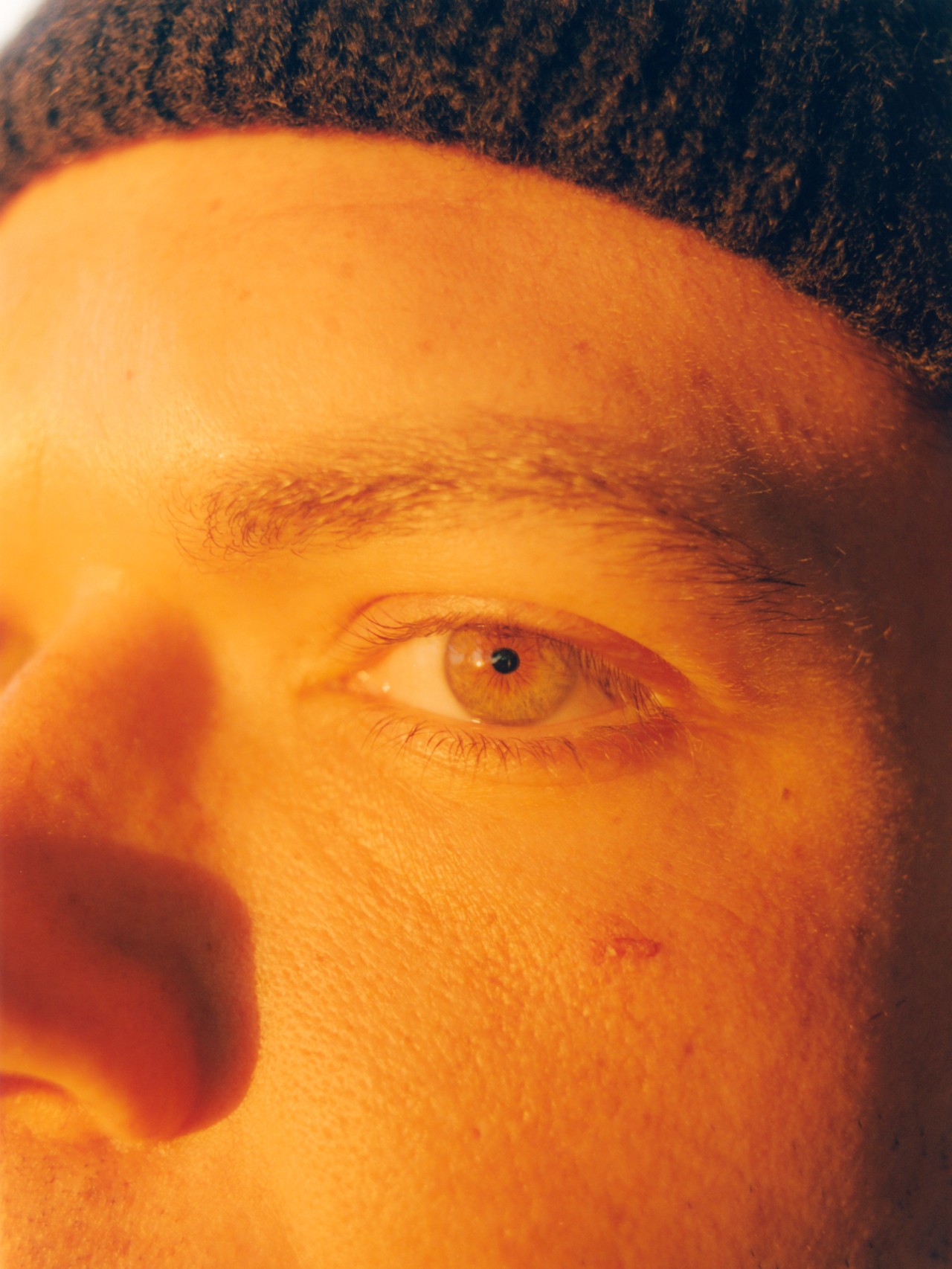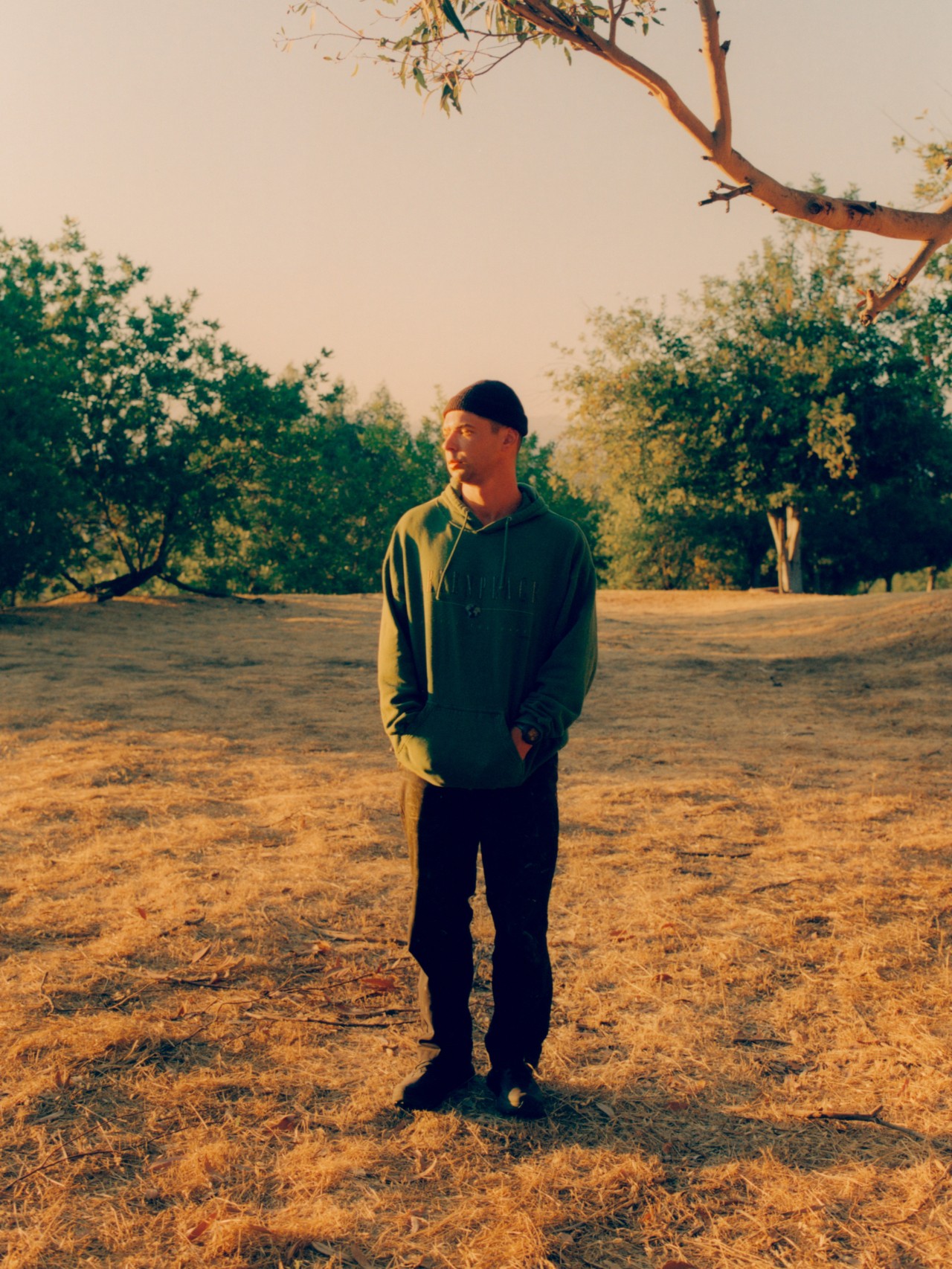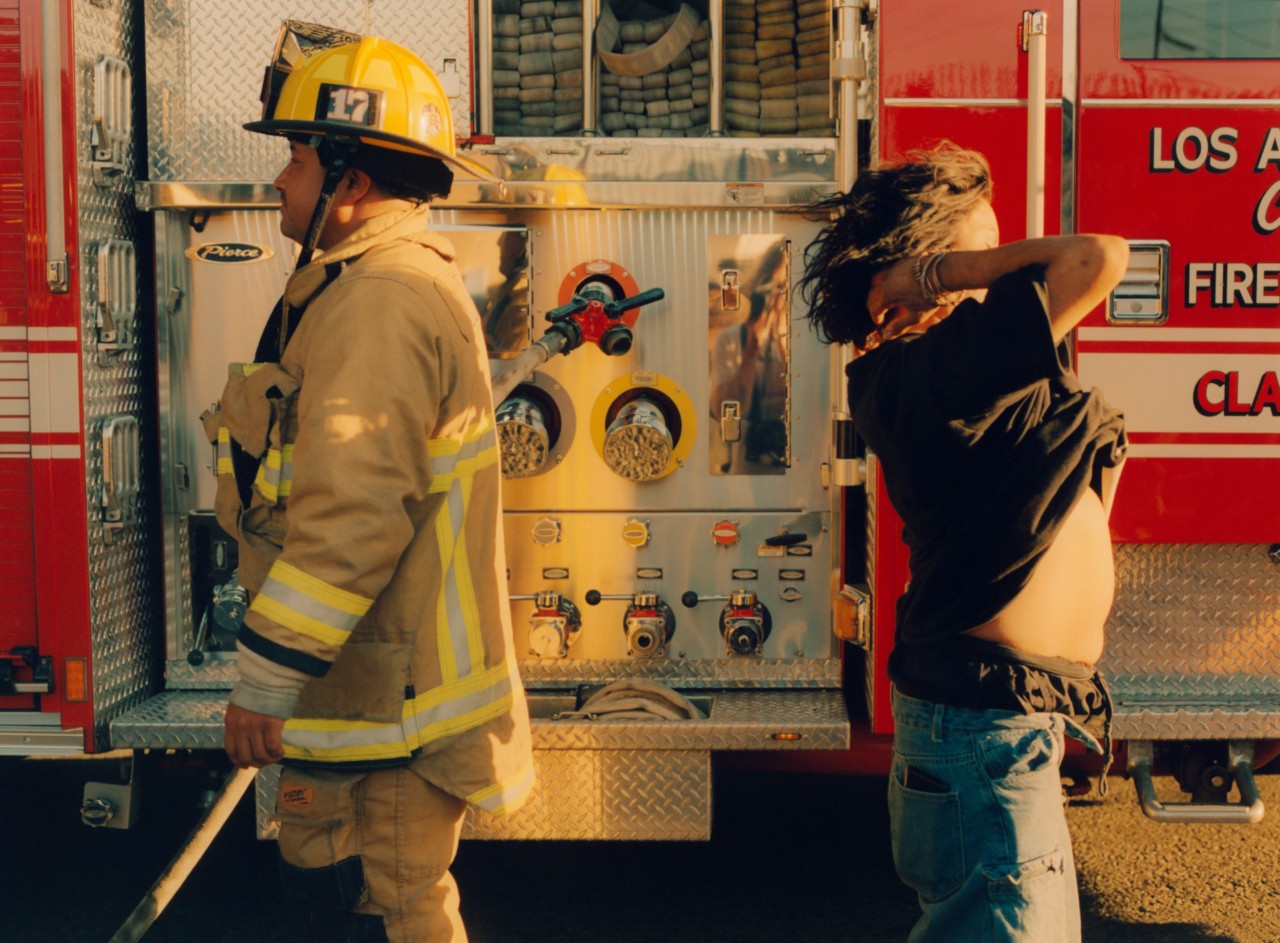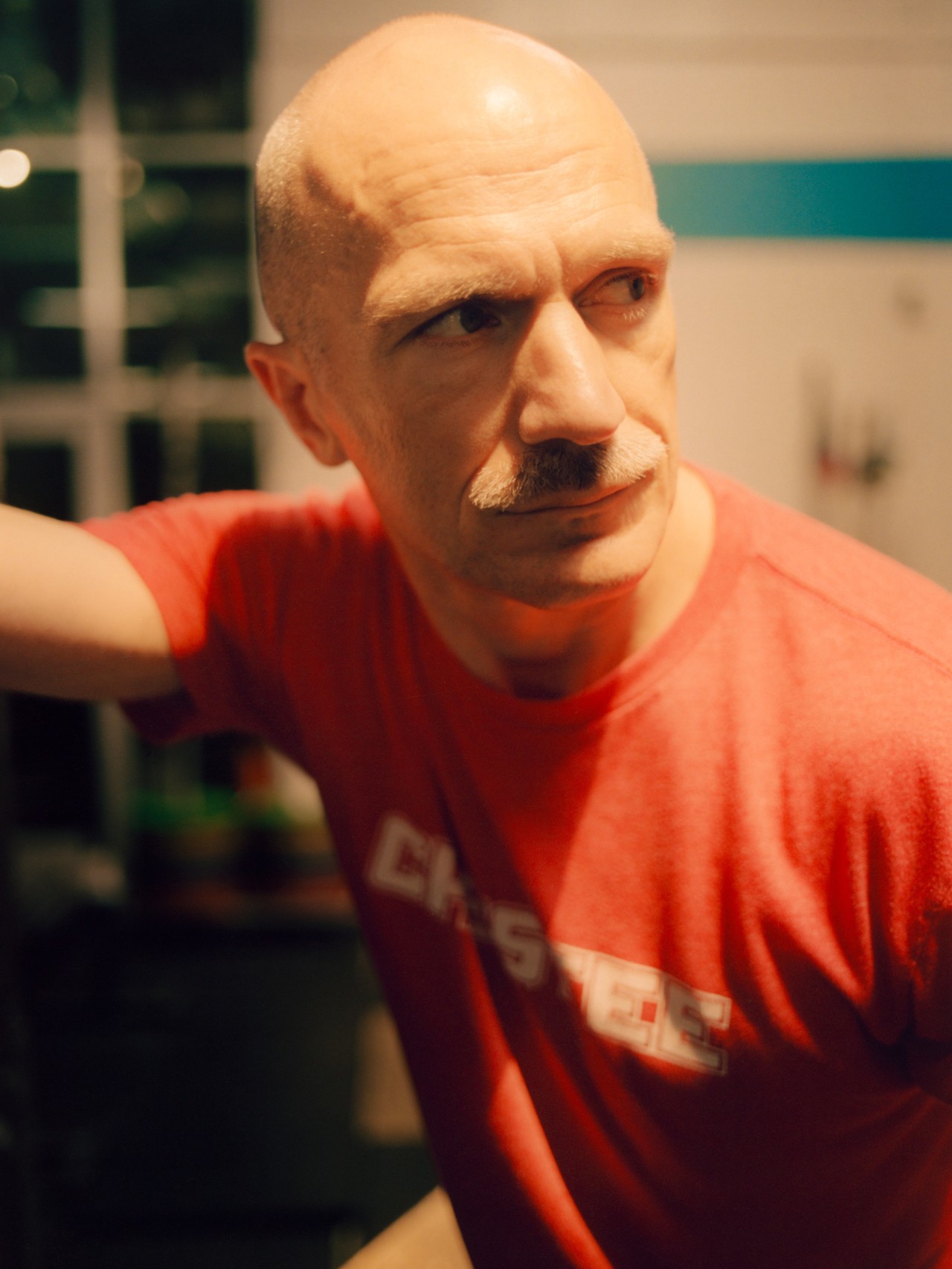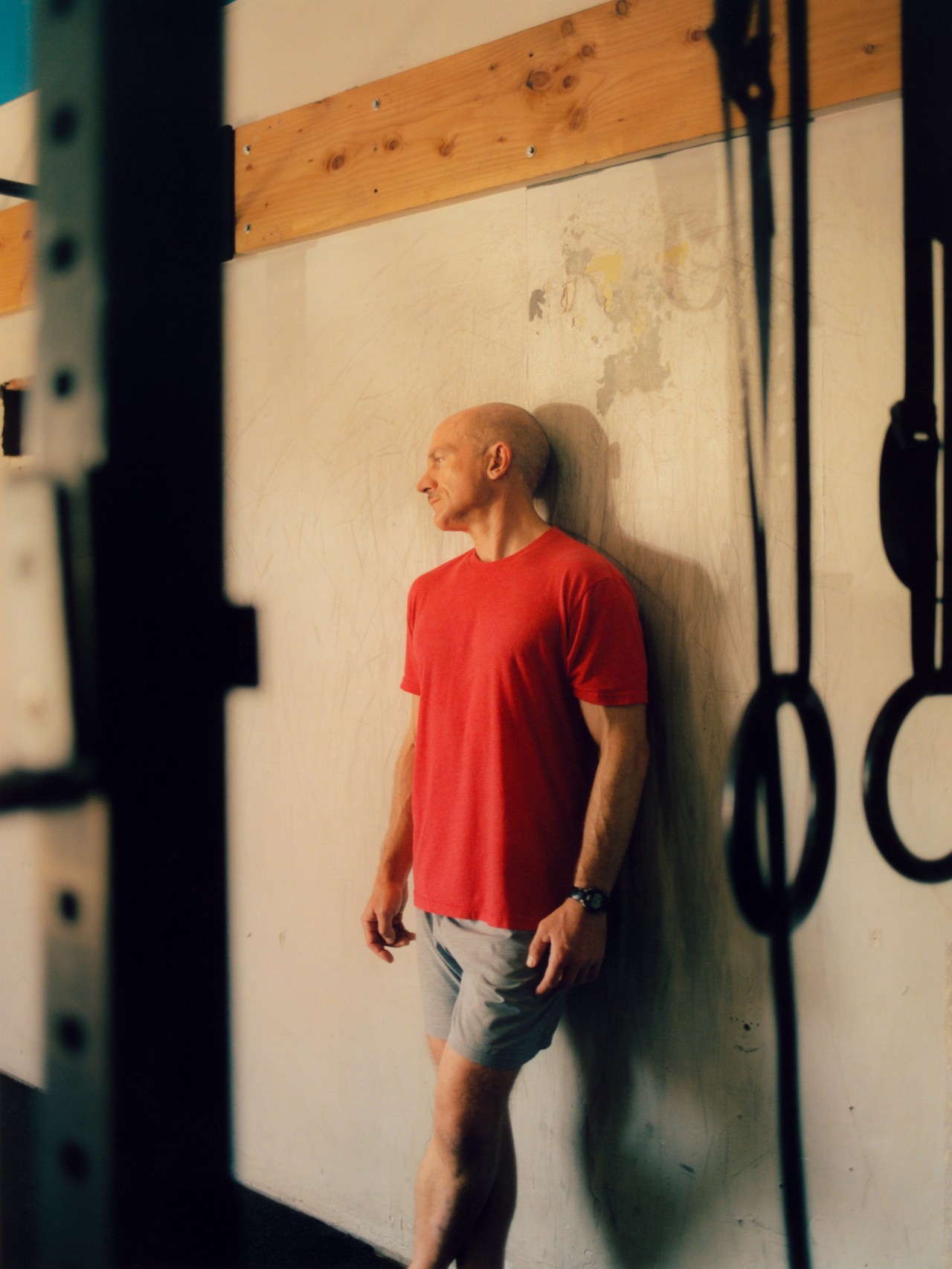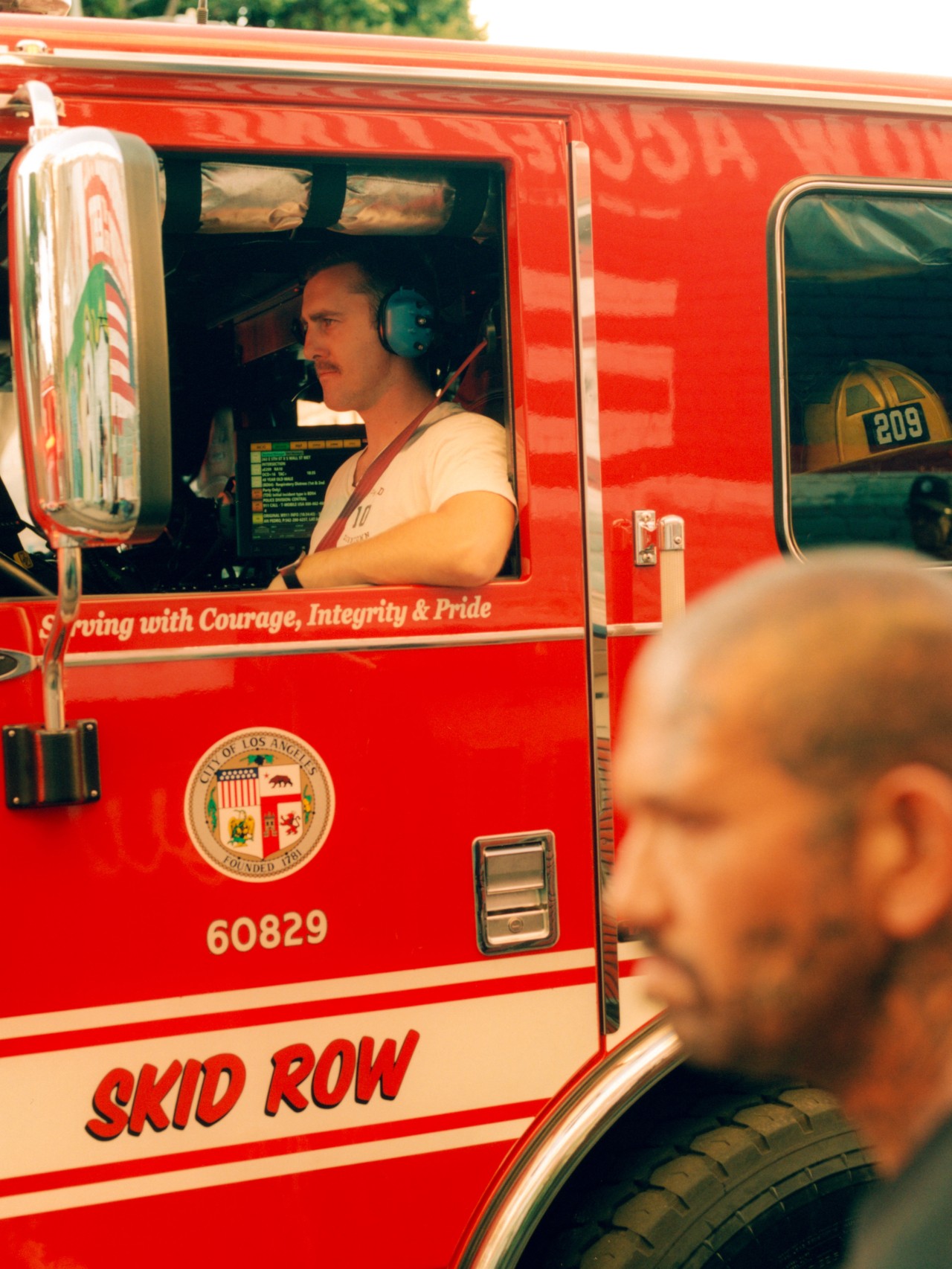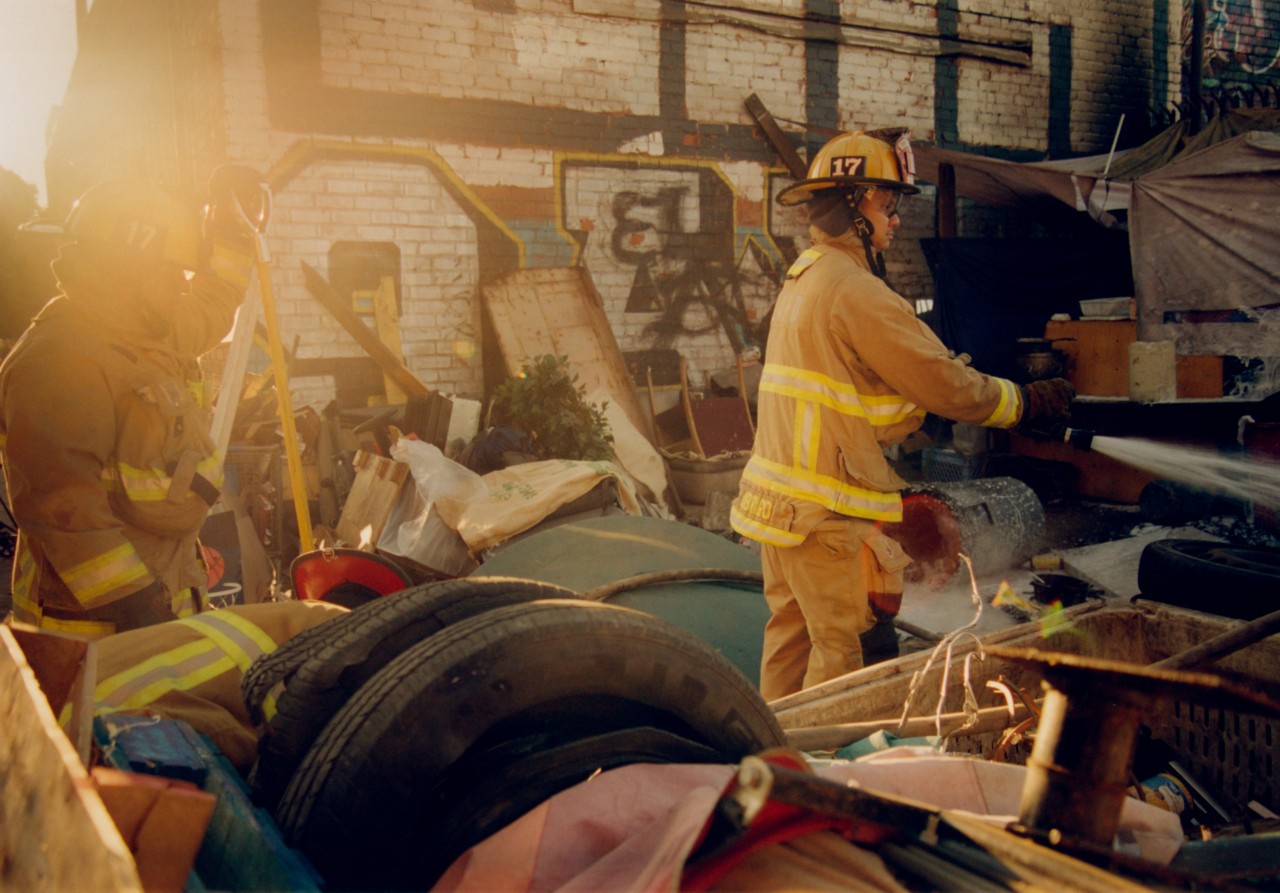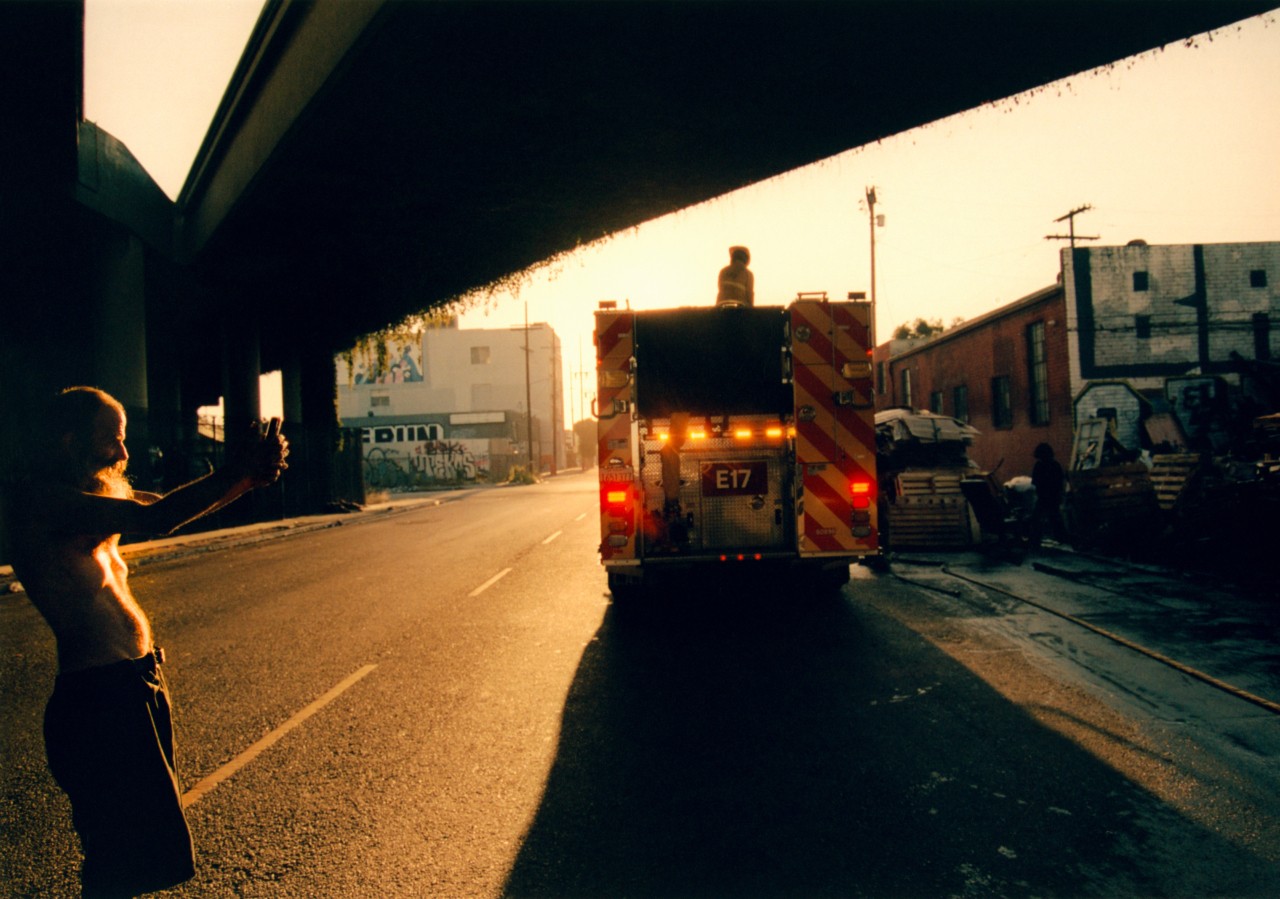
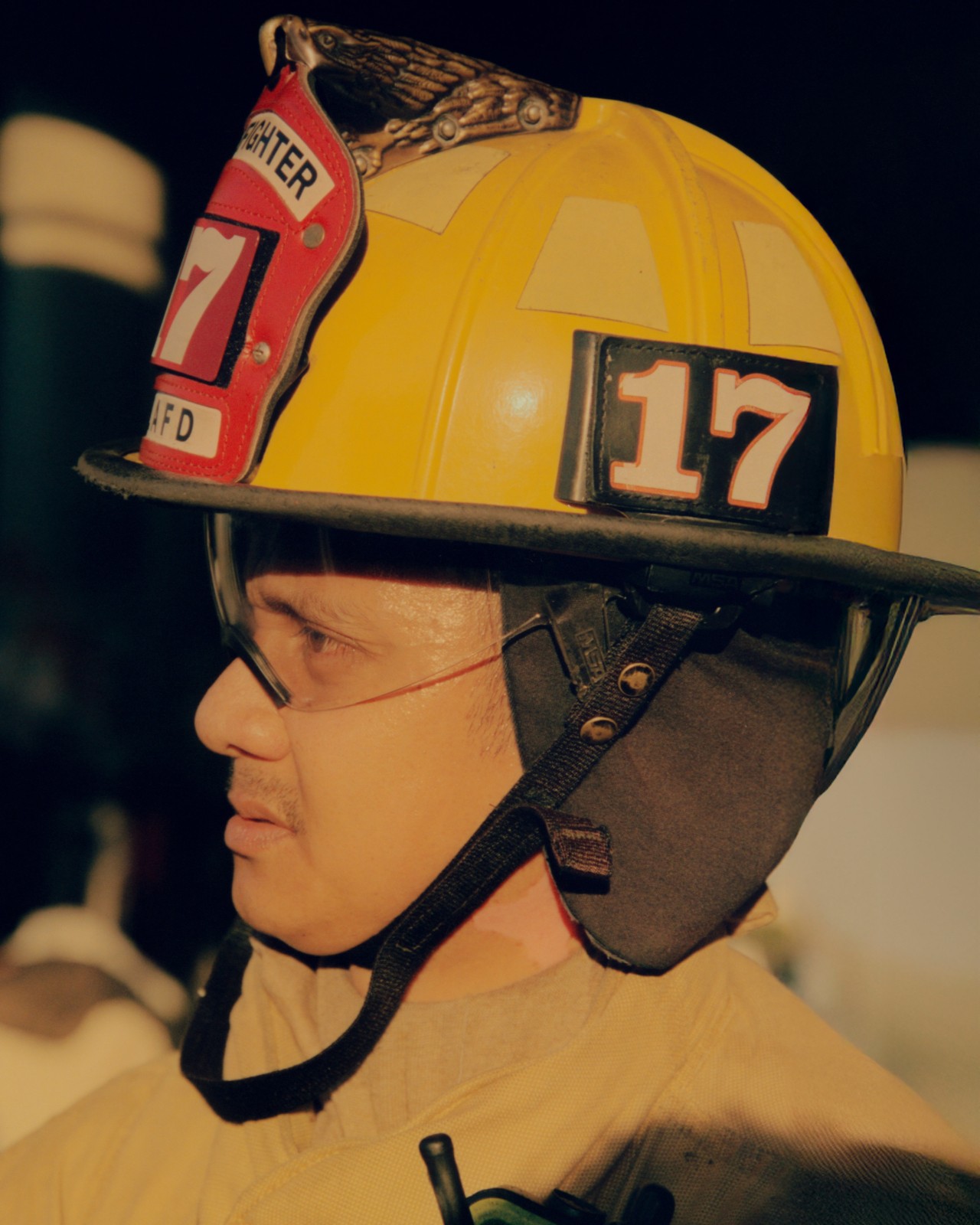
Words by Max Walker
photographs by andrew friendly
Chloe Hawkins slept for just six hours after the previous day’s 16-hour shift when she woke up on deployment, surrounded by the steady hum of life in a fire camp. These camps are often temporary towns of their own—thrown together to house the many response personnel working on the wildfire frontlines—and they are always bustling, even through the night, with shifts running around the clock.
Hawkins squeezed in a quick shower and made sure to grab something to eat at the canteen (though she said the food sucks), before heading to her morning briefing. Everyone spoke, from the meteorologist to the operations commander, before crews were divided into teams named for every letter of the alphabet, from Alpha to Zulu. Each group was assigned to a branch of a fire, whether it’s burning in Colorado, California or Arizona. The military-style coordination makes sense, given how many ex-military now work in wildfire response.
Not many people are willing to do the low-paid, dirty work, Hawkins said. As a communications technician, Hawkins is responsible for placing radio repeaters on mountaintops to relay handheld signals between teams. It’s grueling work, but essential for synchronizing operations across vast distances. “It’s not a place for everyone,” she said. “But it’s addictive.”
This year, that addiction comes at an even higher cost. The 2025 wildfire season in North America began months earlier than usual, with deadly January blazes in Los Angeles, and government scientists warn it may stretch well into the fall. Europe, too, is bracing for what officials say could be its worst wildfire season on record amid deadly heat waves. For firefighters, whose jobs already demand extreme endurance, the work now blurs from one deployment to the next, collapsing the margins for recovery and intensifying a mental health toll that threatens the very workforce meant to keep the flames at bay.


Those pressures typically fall heaviest on the crews closest to the flames. The so-called “hotshots”—such as hand and engine crews—don’t have the relative luxury of the fire camp. “We go out for about 14 days at a time, and sleep somewhere on the ground close to the fire,” said Rebecca Reynolds, who has spent five seasons as a hotshot in a wildlands fire crew. Hotshots are some of the most qualified, highly trained personnel, with exceptional physical fitness. They don’t have time for showers or lunch breaks. Reynolds is what most people picture when they think of a wildland firefighter. “Adrenaline doesn’t really carry you too far; you have to rely on your team,” she said.
There’s a sense of pride and duty in Reynolds and Hawkins. “It’s valued to put your body and your life out there to do more,” Hawkins said.
During the fire season, which typically lasts from May to October (though climate change is making it longer), Hawkins and Reynolds endure weeks-long deployments. But when the season ends, the social support systems built during those intense weeks fall away, too. Crew members return home carrying the weight of what they’ve seen, often without anyone to share it with. “It feels isolating,” Hawkins said of returning to Brooklyn and having few people who can relate to the intensity of her experience: “There aren’t that many people that live my life.”
The mental burden of fire work in the United States is immense. Despite the camaraderie forged in the field, 49.8% of Forestry Service workers report feeling emotionally detached and isolated. Another study by the National Institutes for Health found that firefighters face a 57% risk of developing PTSD, compared to 37.8% among military personnel.
Fighting fire is traumatic, said Tom Proulx, a veteran of 12 wildfire seasons with the Forestry Service in Oregon and California. To survive it, he explains, people often have to override the most basic human instinct of fleeing immediate danger. “The big thing about fire is that you learn to numb yourself,” Proulx said. “Because if you don’t, then you’ll be frozen by terror.”
The psychological fallout of that “numbing” rarely gets space within the fire service, studies suggest, with data showing that firefighters are often left to deal with the emotional repercussions of service on their own. Between 2014 and 2020, more firefighters in the U.S. died by suicide than in the line of duty. PTSD among women firefighters has also been shown to affect reproductive health, namely ovarian reserves, according to a study released in January.
The culture itself may be a contributing factor—at times difficult, crude, and deeply masculine, said Reynolds, who referred to firefighting as “a boy’s club,” not dissimilar to a college frat house: “If you weren’t crunching beers and talking about football, then people would call you a f**,” she said.

Silence around mental health in the service is often mistaken for dutiful stoicism, Hawkins said. Vulnerability is rarely voiced, and when it is, it’s often brushed aside. Hawkins admits she’s had to “suck it up” during difficult times. And yet, she said she still finds pride in the culture of service: “Honestly, you feel like you’re doing something [that matters].” But, the appeal of duty can be double-edged. “I thought I was doing something that would make my dad proud,” Proulx said. “I thought that if I’d died in the fire, then I’d have done a good thing.”
Jeff Dill, a licensed counselor and former fire battalion chief, has overseen large-scale emergency responses, including Hurricane Katrina in 2005. Despite witnessing countless traumatic events, “we never talked about behavioral health,” he said. Determined to change that, Jeff trained as a counselor and founded the Firefighter Behavioral Health Alliance in 2011. The organization runs a confidential reporting service for first responder suicides and supports the families of those who have died. Since 2014, FBHA has received reports of 2,180 suicides though Dill estimates that is only about 60% of the actual figure.
A cornerstone of Dill’s work is with families of the deceased. Each year, the FBHA hosts a vigil to honor those lost. “We bond families together,” he said, but acknowledged the emotional wounds can’t be easily healed. “They’re looking for answers here on Earth that they’ll never find.”
Dill is the first to admit that masculine behavior is deeply entrenched in the profession—95% of the fire service is male—but he sees “cultural brainwashing” as a root cause of harmful norms. “When you put the uniform on, this is how you’re supposed to act,” he said. He believes more honest, open dialogue is essential to building a mentally resilient service. With trauma and depression, Dill said, “comes loss of confidence and skills, especially decision-making.” And too often, the most important question for a firefighter is not whether someone is feeling good, but “will they be there to back me in a fire?”
Dill hopes that through solid data, workshops, and honest conversations, lasting change can take root to make the service more effective at supporting the mental well-being of its workforce. He’s spoken at the Pentagon and worked with fire services as far afield as Australia and Germany. Still, he’s candid about the scale of the challenge: “We will never get to zero,” he said. And while “we might know the ones we lose, we will never know the ones we save.”


One reason for Dill’s optimism is not just the growing awareness within the fire services, but the increasing availability of psychologists and mental health resources. The problem, he said, is cultural: the firefighters are rarely encouraged to use them.
Hawkins and Reynolds acknowledge the crisis of suicide within the service, but as Reynolds put it, “The culture that we have here is not one of talking about our feelings,” a silence she still attributes to widespread stoicism. Even among close-knit crews, emotional honesty is rare, and vulnerability is often seen as a liability.
One of the causes of post-traumatic suffering, Dill said, is moral injury: the deep sense of betrayal that occurs when someone trained to save lives is unable to do so. For the FBHA, forgiveness is where healing often begins. Traditionally, moral injury has been associated with structural firefighters working in urban, built-up environments. But as urban sprawl accelerates, more people settle in fire-prone regions, and climate change makes more regions fire-prone, the landscape of fire is changing, too. Wildfires are no longer confined to remote forests; they now threaten densely populated areas and force wildland crews into life-or-death decisions once reserved for urban responders. “Guess what?” Dill said. “They built towns on those mountains.”
That collision of wildland and urban fire made the Los Angeles fires at the start of the year especially tragic. Fire crews were increasingly forced into impossible choices, resulting in extreme cases of moral injury and emotional fallout.
If Dill is right—that those morally painful decisions leave the deepest scars—then the psychological burden on firefighters is only set to grow. In March, The New Yorker reported that 2,000 forestry service employees were fired by Elon Musk’s Department of Government Efficiency as part of widespread spending cuts, even as rising temperatures and drought conditions worsen, lengthen, and expand wildfire season. “Most of the people that I know in Secondary Fire have lost their jobs,” said Hawkins. “[DOGE] doesn’t realize that anyone in the forest service in secondary fire could fill overhead positions.”

“The big thing about fire is that you learn to numb yourself. Because if you don’t, then you’ll be frozen by terror.”
Despite the name, “secondary” firefighters are anything but peripheral. These part-time members of the service often hold essential qualifications and play key roles in the so-called “throw-together” crews, which handle everything from setting up equipment to forest management through controlled burns. They are also critical to forest maintenance, an often overlooked but critical component of fire prevention. Without their work—executing controlled burns, thinning forests, creating fire breaks—fires grow larger, faster, and harder to contain.
Reynolds put it bluntly: “If we’re in a situation where we have fewer resources because our secondary fire is not there to help us, then we’re going to spread thin.” And with fewer resources come more of those morally injurious decisions: where to send help, what homes to protect, and who might be left behind. As fire seasons grow more severe, more—not fewer—personnel are needed on the ground. “It’s going to be a very, very unsafe year,” Hawkins said. “Because we don’t have our secondary firefighters. When shit blows up, who do we call?”
Just as PTSD can take months or even years to fully surface, the consequences of DOGE’s cuts may not be fully felt for a decade. But the early signs are already ominous. Fire services sit at the precipice of a new era of volatility as we kick off what is likely to be one of the worst wildfire seasons in history. Even the loss of support staff would have been damaging, but cutting frontline workers is catastrophic. Fire services now find themselves on the brink of a new era of instability.
Across fire camps and agencies, one principle is echoed again and again: In a blaze, what matters is knowing that your crew has your back. Now, a deeper question lingers: What if the state doesn’t have theirs?


Editor’s Note: Some names in this story have been changed to protect the identities of individuals who spoke candidly about their workplaces. These changes were made to prevent any risk of retaliation or professional consequences for those who chose to share their experiences.
Battling Firefighter Burnout in the Era of Climate Change
